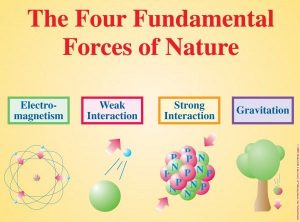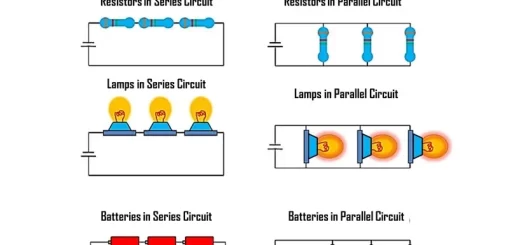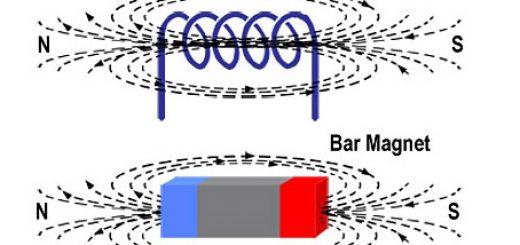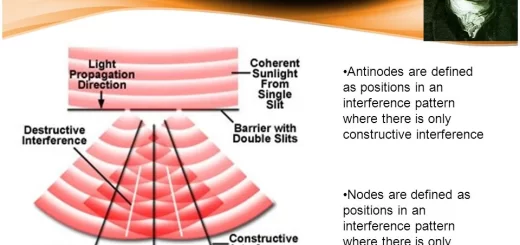Fundamental Forces in nature, Gravitational forces, Electromagnetic forces & Nuclear forces
The weight of the object at the south pole is greater than its weight at the equator because the Earth’s gravitational acceleration at the south pole is greater than the Earth’s gravitational acceleration at the equator. Gravitational acceleration changes on Earth’s surface from one place to another because the distance between the Earth’s surface and the centre of the Earth changes from one place to another due to the non-spherical shape of the Earth.
Force
Force is an effect that attempts to change the object’s state from being static to motion or vice versa or attempts to change the direction of motion. The measuring unit of force is Newton (N). when a proper force acts on a static object, the object will move from its position to another position in the same direction of the force acting on it. when a proper force acts on a moving object in the same direction of its movement, the speed of the moving object will increase.
The book on the table remains static as long as no one moves it because there is no force acting on it. The wall doesn’t move when you push it with your hands because the force acting on the object is improper. The pencil is still in a static state on the desk because there is no force acts on it.
The static ball moves when you kick it with your foot and stops when the goalkeeper catches it because the object’s state changes from the static state to motion state or vice versa when a proper force acts on it. The ball changes its direction when the player delivers it with his head because the direction of the acting force is in the opposite direction of the movement of the object.
Fundamental forces in nature
There are many different types of forces, these forces can’t be seen in nature but we can feel them in some phenomena such as wind motion, the gravitational of objects to Earth, the attraction of iron to the magnet, lightning & thunder. Also, there are forces causing technological applications, such as generating the electric current, fire weapons, nuclear explosions, and nuclear reactors.
Although the forces differ, the scientists classified them into three divisions. The fundamental forces in nature are gravitational forces, electromagnetic forces and nuclear forces (weak nuclear forces and strong nuclear forces).
Gravitational forces
Isaac Newton was the first one who discovered the Earth’s gravitational force when he was standing under a tree and he found an apple falling down to the ground. Then he proved that all masses are attracted toward the Earth itself by a force known as Earth’s gravitational force and this force depends on the masses of the objects.
When you put a set of objects that differ in mass (1 kg – 5 kg – 5 kg) on the ground and try to lift the masses and put them on a table beginning with the smallest mass then the next one in order, you will observe that the exerted work to lift objects increases by increases the object’s mass. So, As the object’s mass increases, the work done to lift the object upwards increases in the opposite direction of the Earth’s gravitational.
Earth attracts the objects to its centre by a force called the object’s weight, Object’s weight increases by increasing the object’s mass and vice versa. Object’s weight is the ability of the Earth to attract that object to the center, or it is the force of Earth’s gravitational to the object. The measuring unit of the object’s weight is Newton (N), so, the weight of an object can be calculated by using the following relation:
Object’s weight (W) = Object’s mass (m) × Earth’s gravitational acceleration (g)
The Earth’s gravitational acceleration = 9.8 ≈ 10 m/sec². When the weight of an object equals 30 newton, this means that the ability of the Earth to attract this object equals 30 Newton. The effective point of an object’s weight is located at its centre and this is known as centre of gravity, so it is said that the Earth attracts the objects towards its centre (its centre of gravity).
The mass of the object remains constant by changing its position on the Earth’s surface because the mass of the object is the amount of matter that the object contains, and it doesn’t change by changing the position. The weight of the object is always more than its mass because it equals multiplying the mass of the object by Earth’s gravitational acceleration.
Object’s weight changes from one place to another on the Earth’s surface because Earth’s gravitational acceleration changes from one place to another. The weight of a bag of sugar equals 1kg a phrase is scientifically not accurate because the amount of 1 kg represents the mass of a bag of sugar and not its weight.
The value of Earth’s gravitational acceleration changes according to: Approach or move away from the centre of the Earth, and transfer from one place to another on the Earth’s surface.
Approach or move away from the centre of the Earth: Earth’s gravitational acceleration decreases by moving away from the Earth’s centre. (on raising up the surface of the Earth). Earth’s gravitational acceleration increases by approaching to the Earth’s centre. (on getting down towards the surface of the Earth). The body weight increases by approaching to the centre of the Earth by increasing the Earth’s gravitational acceleration and vice versa.
Transfer from one place to another on the Earth’s surface: due to the difference of the distance between the Earth’s surface and its centre from one place to another due to the non-spherical shape of the Earth, so the distance between the centre of the Earth and any point on Earth’s surface at the two poles [north and south poles] is less than the distance between the centre of the Earth and any point on the Earth’s surface at the equator. So, the Earth’s gravitational acceleration at the two poles is more than that at the equator.
The weight of the object at the south pole is greater than its weight at the equator because the Earth’s gravitational acceleration at the south pole is greater than the Earth’s gravitational acceleration at the equator.
Electromagnetic forces
The electromagnetic forces are the magnetic forces (magnetism) produced by the effect of passing an electric current (the flow of electric charges) through a coil.
When you coil the wire in a spiral shape around the plastic tube, insert the iron bar (or the iron nail) in the tube, connect the two ends of the wire to the battery, and approach the iron bar (inside the tube) to the iron filings.
You will observe that the iron bar attracts the iron filings (the iron bar acts as a temporary magnet when the electric current passes through the wire). so, the electric current has a magnetic effect. The wrought iron attracts iron filings after putting it inside an electric coil because it is changed into a magnet.
Applications on electromagnetic forces
The idea of the operation of a lot of devices depends on the electromagnetic forces, such as an electromagnet, electric generator (The dynamo) and electric motor.
The electromagnet is made up of an insulated copper wire coiling around a bar of wrought iron. When the electric current passes through the coil, the wrought iron bar turns into a temporary magnet, and when the electric current is cut off, the wrought iron bar loses its magnetism. (It changes the electric energy into magnetic energy).
The electromagnet is used in making many devices such as the electric bells, and the electric winches (cranes) which lift scrap iron and cars in ports. Electric generator (The dynamo) coverts the mechanical (kinetic) energy into electric energy such as the dynamo in a bike. An electric motor converts the electric energy into mechanical energy, such as the motor in a fan and a blender (a mixer).
Electric generator → Mechanical energy → Electric energy
Electric motor → Electric energy → Mechanical energy
The importance of dynamo in case of cutting off the electric current because it is used in generating the electric energy from mechanical energy. The electric motor is used in the manufacture of the fans and the washing machines because it changes the electric energy into mechanical energy.
Nuclear forces
Scientists have discovered that the atom stores a massive amount of energy inside its nucleus. This massive energy is accompanied by forces known as nuclear forces, which can be divided into two types:
- Weak nuclear forces are used to get radioactive elements and radiations, which are used in medicine, scientific researches, and industry.
- Strong nuclear forces: these nuclear forces liberate nuclear energy, which is used in producing the electric energy and it is used in military purposes.
The importance of nuclear force because it is used in medicine, industry and producing electricity.
Force, Newton’s First Law of Motion, Inertia & Factors that affects the momentum
The force and some technological applications depend on their motion on the effect of force
Properties of Strong nuclear forces, Source of nuclear binding energy & Quark Model
Accompanied forces to motion, Forces of inertia, Friction forces & Biological forces




